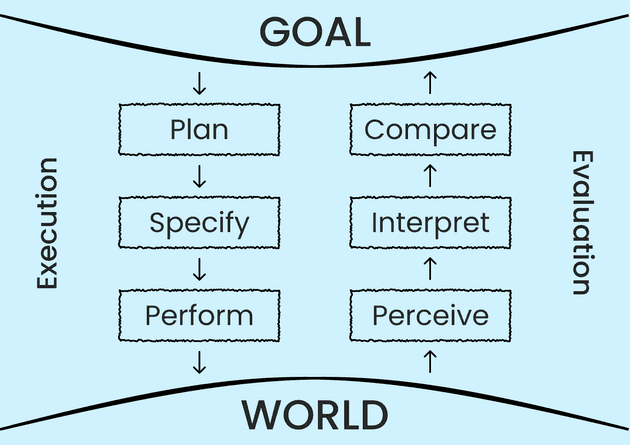How does design help users achieve their goals? Examine your design using the framework of the Seven Stages of the Action Cycle: Goal, Plan, Specify, Perform, Perceive, Interpret, and Compare.
I oftentimes get annoyed by poor design in everyday life, whether it's a website form, an electronic controller, or door handles. I hate the confusing one more than the ugly one because design is how things work.
Cognitive scientist and usability engineer Donald Norman proposed the Seven Stages of the Action Cycle, a framework designers can use to understand how people interact with their design, particularly in the context of achieving goals. The seven stages are:
- Goal: Decide what you want
- Plan: Plan how to achieve the goal
- Specify: Determine the exact steps
- Perform: Execute your plan
- Perceive: Notice what changes occur
- Interpret: Understand what the changes mean
- Compare: Check if the result matches your goal
Use watching a movie at home as an example. Initially, you form a goal: to enjoy a film. Next, you translate that goal into a clear plan: "I'll press the play button." Then, you determine precisely how to carry out this intention and pinpoint the right action. Finally, you physically execute the action by pressing the button.
These are the first four stages: Goal, Plan, Specify, and Perform.
Now, after the execution, you perceive the results, see the TV screen change, and then interpret what this means; perhaps the movie starts playing immediately, or a confusing error message appears. Finally, you evaluate whether your goal has been successfully met.
These are the last three stages: Perceive, Interpret, and Compare.
When a product is well-designed, the first four stages should enable users to easily figure out how to perform actions (Execution), and the last three stages should help users effortlessly understand the outcome (Evaluation).
Poor design fails because it leaves users confused about which actions to perform (execution failure) or unsure whether their actions succeeded (evaluation failure). This is tightly related to the six fundamental psychological concepts for good design.
Another framework I noted before for evaluating design is Discoverability and Understanding.
